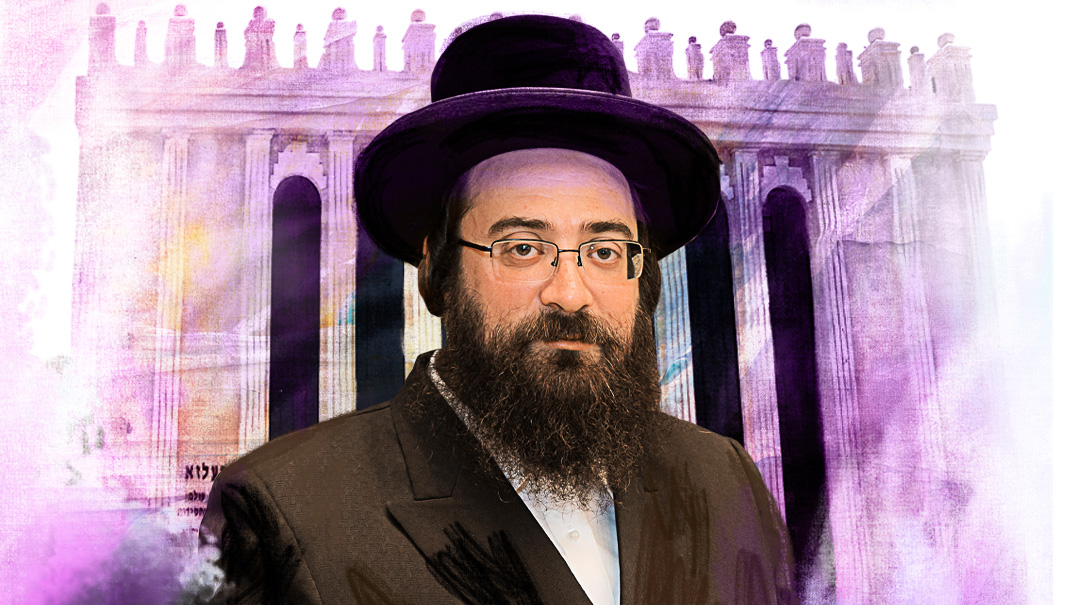Bridge Built in Belz
| July 25, 2023What’s the secret of the grand Belz synagogue, the towering white stone edifice that dominates the northern Jerusalem skyline?

AN American bochur was visiting the Jerusalem suburb of Givat Zeev when he walked into a shul that he discovered was affiliated with the Belz chassidus.
“I know of only one Belzer chassid, and his name is Yechezkel Friedman,” the bochur told a friendly man he encountered.
“Well, you’re in luck,” the man said. “Because Yechezkel Friedman actually lives right next door.”
Excited, the bochur came over to meet Rabbi Friedman and share his story. He’d grown up in the Midwest, the son of a Jewish father and non-Jewish mother. As a kid, he’d always been fascinated by Judaism, and one day, he came across a clip featuring Friedman giving a tour of the magnificent Belz shul in Jerusalem. The boy was hooked; he watched it about a dozen times, and something about the majesty and holiness of the place pulled at his heart.
“Today I’m a ger learning at Ohr Somayach,” he told Rabbi Friedman. “And it all started with your tour.”
What is it about this landmark in the heart of chassidic Jerusalem that attracts such a surprisingly broad swath of Jews? What is it that draws tour groups from around the world and across religious affiliation, and leaves them with eyes opened and souls touched?
On a recent hot summer morning, I make my way down Dover Shalom Street in Kiryat Belz to the famous towering white stone edifice with the mini spires forming a parapet around the flat roof, dominating the northern Jerusalem skyline. I want to discover the secret for myself.
Oops! We could not locate your form.

